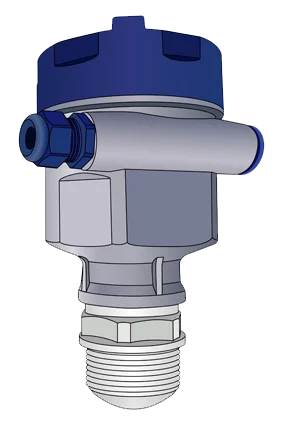Selecting The Right Radar Level Sensor – 80 GHz vs 26 GHz

When selecting a radar level sensor, there are several factors to consider to ensure that the sensor is able to provide accurate and reliable measurements for the specific application.
- Operating range: The operating range of the radar sensor is an important consideration, as it determines the distance between the sensor and the surface of the material being measured. It is important to select a sensor that has a range that is appropriate for the specific application and that is able to accurately measure the level of the material.
- Operating frequency: Radar level sensors operate at different frequencies, and the choice of frequency will depend on the specific application. 26GHz radar sensors are typically used for applications where the material being measured is highly reflective, such as liquids and powders. 80GHz radar sensors, on the other hand, are typically used for applications where the material being measured is less reflective, such as granular or bulk materials. 80GHz radar sensors have a smaller wavelength and can detect a higher resolution level and can also penetrate through dust, steam, or foam.
- Measurement accuracy: The measurement accuracy of the radar sensor is an important consideration, as it determines the ability of the sensor to accurately measure the level of the material. It is important to select a sensor that has a high measurement accuracy and that is able to provide consistent and repeatable measurements.
- Temperature and pressure range: The temperature and pressure range of the radar sensor is another important consideration, as it determines the operating conditions under which the sensor can be used. It is important to select a sensor that is able to operate within the specific temperature and pressure range of the application.
- Mounting options: The mounting options of the radar sensor are also important to consider, as they will determine where and how the sensor can be installed. It is important to select a sensor that has a variety of mounting options, such as flange, thread or rod, and that can be easily installed in the specific location.
- Communication and Integration: Some radar level sensors have the ability to communicate with other devices, such as control systems and PLCs. The communication interface and protocol should be considered and match with the existing system.
In summary, when selecting a radar level sensor, it is important to consider the operating range, operating frequency, measurement accuracy, temperature and pressure range, mounting options, and communication and integration. 26GHz radar sensors are typically used for applications where the material being measured is highly reflective, such as liquids and powders, while 80GHz radar sensors are typically used for applications where the material being measured is less reflective, such as granular or bulk materials. 80GHz radar sensors have a smaller wavelength and can detect a higher resolution level and can also penetrate through dust, steam, or foam.
Learn more about level sensors
Please contact us to discuss your application


